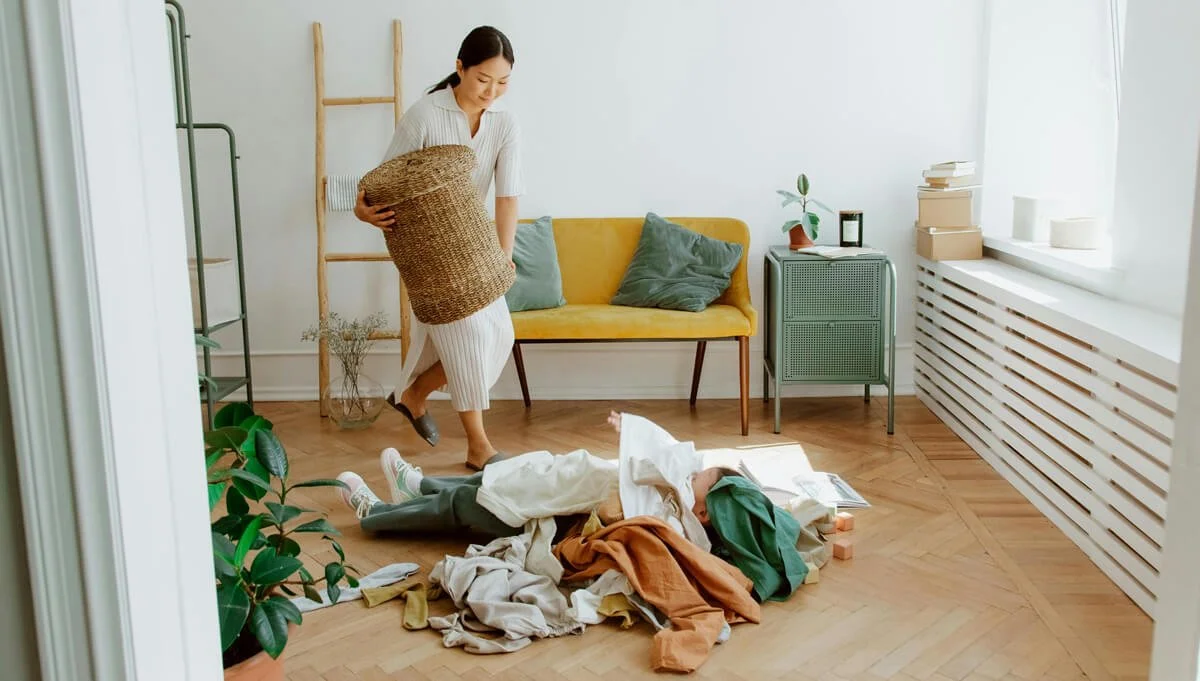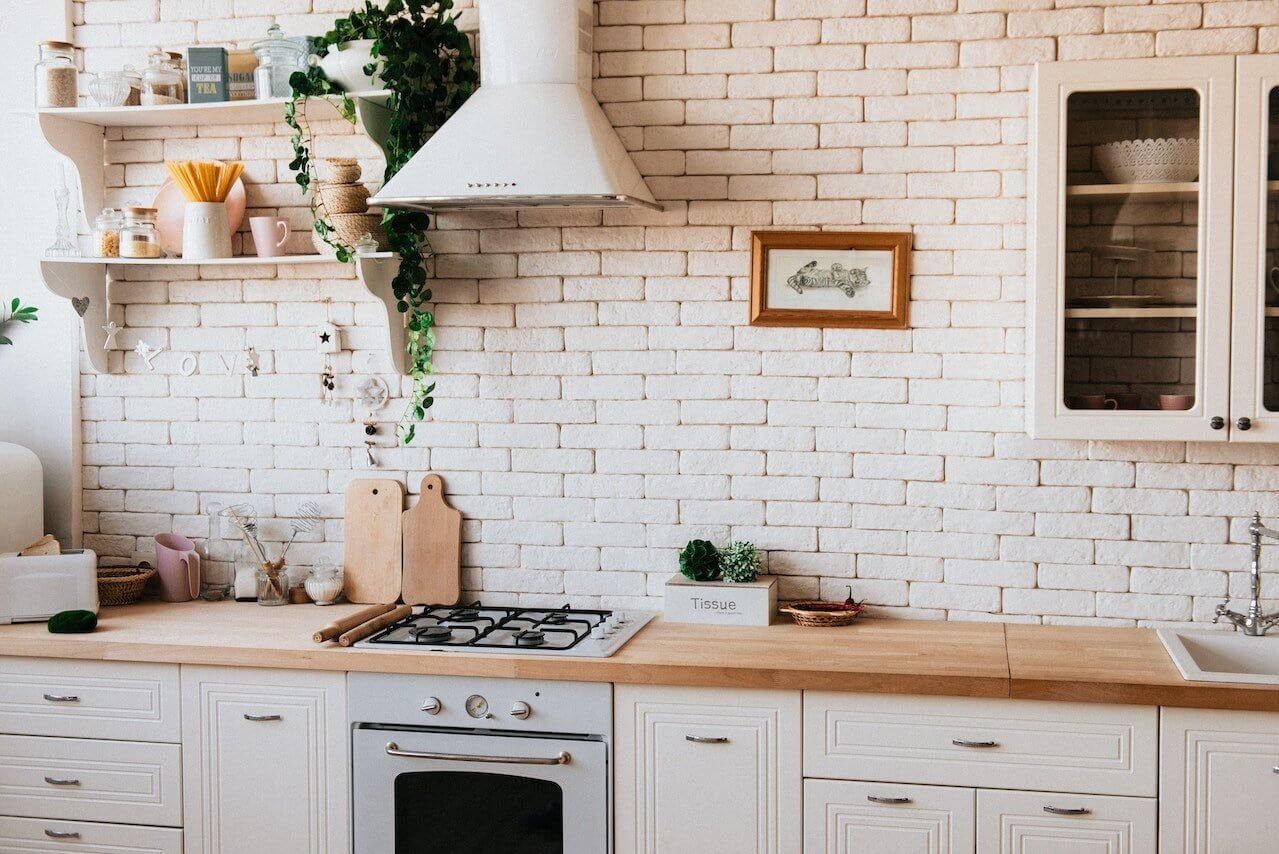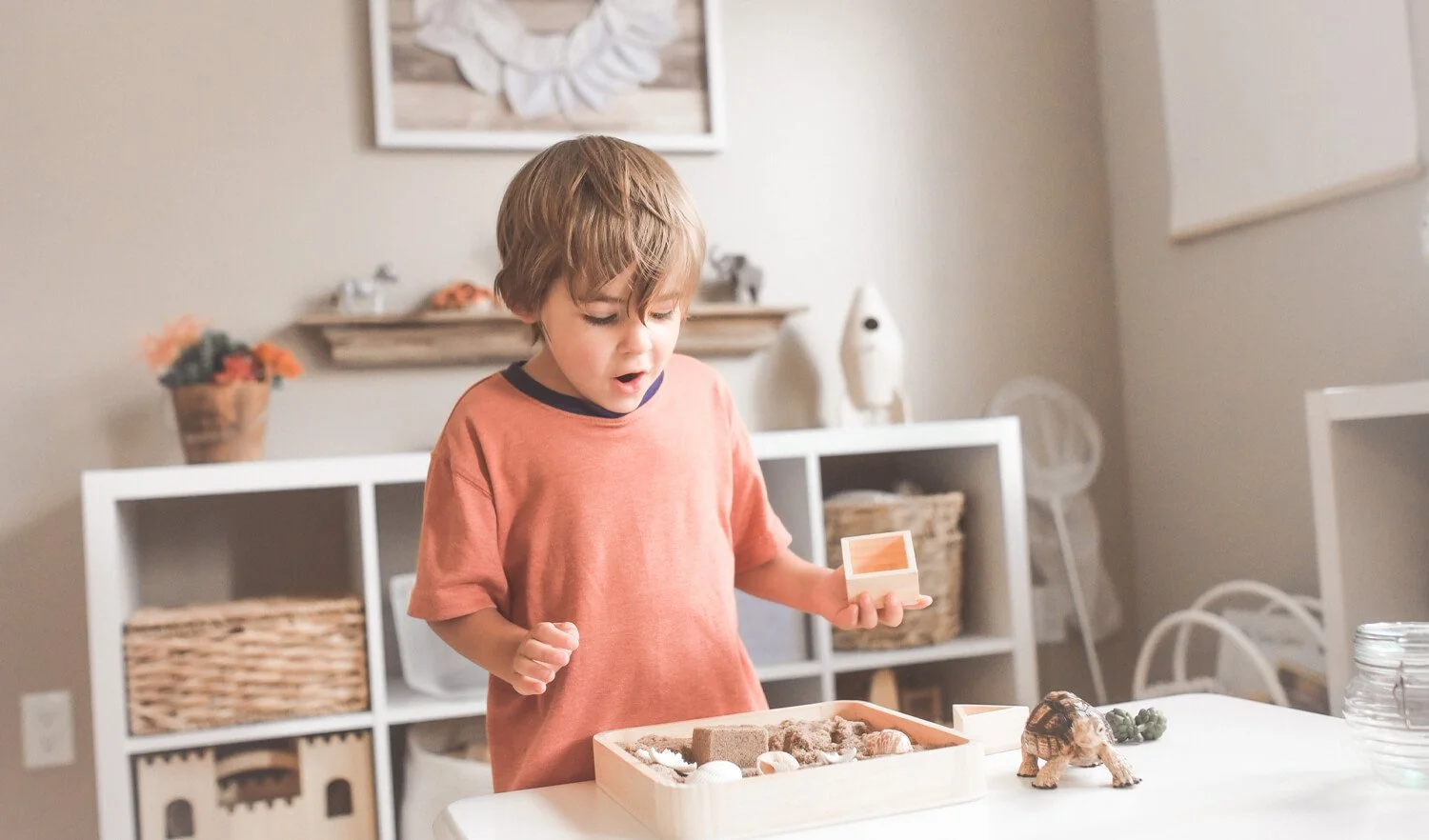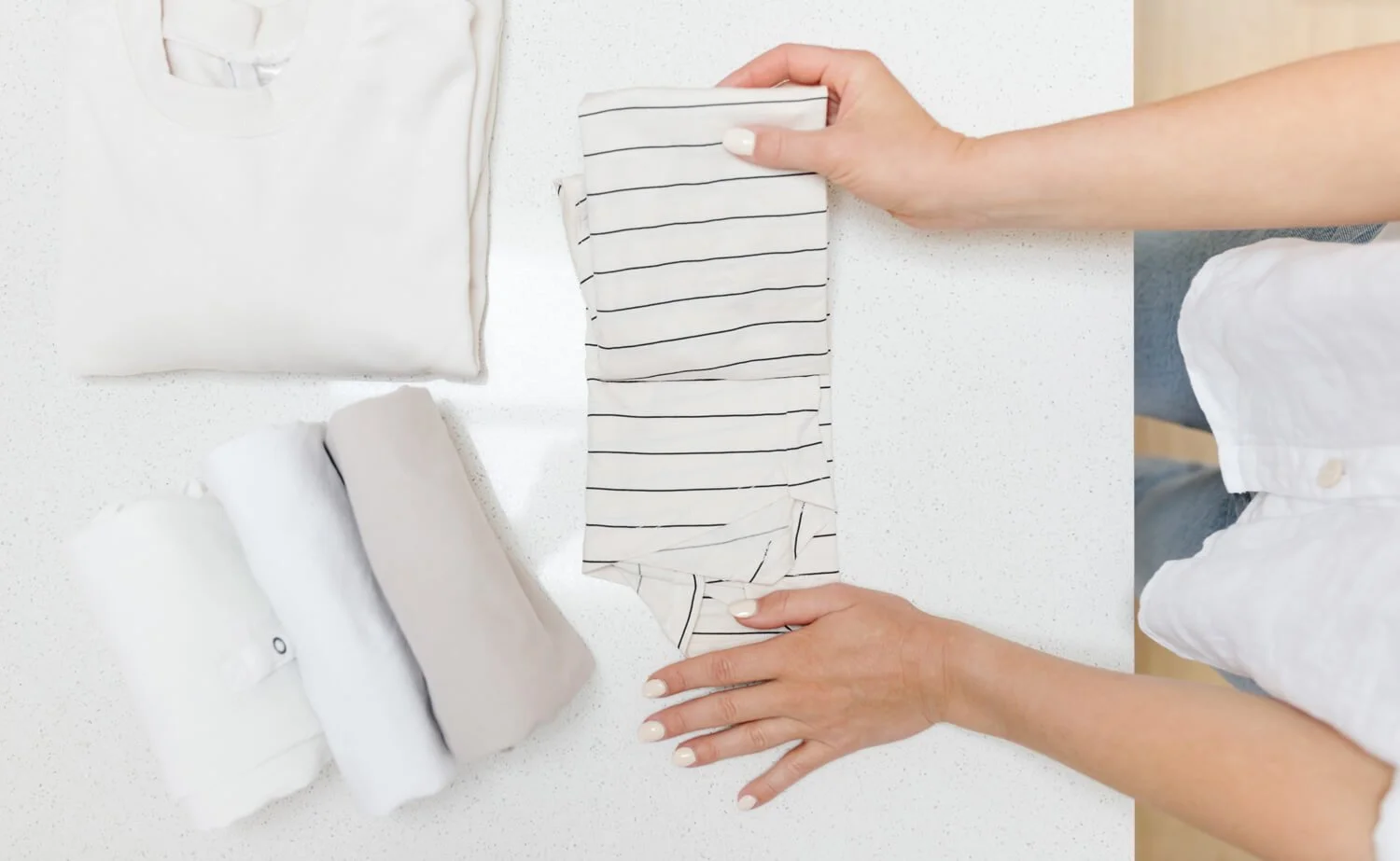How to declutter like a pro: A room-by-room guide
Home organization is more than just tidying up; it's the art of transforming chaos into harmony. It involves creating functional, clutter-free spaces that reflect your unique lifestyle and style. At The Happy Space Co, we believe that organization is the key to a happier, more productive life. Let's explore how decluttering can benefit you in terms of space savings, financial savings, and peace of mind.
Benefits of Decluttering
Space Savings
One of the most immediate benefits of decluttering is the freeing up of valuable space in your home. When you remove unnecessary items, you create more room for the things that truly matter. This can lead to:
Improved use of space: With fewer items cluttering your space, it's easier to move around and use your rooms for their intended purposes.
Better aesthetics: A clutter-free environment looks cleaner and more inviting, making your home a more pleasant place to be.
Increased storage: By removing items you no longer need, you can better utilize your existing storage spaces, making it easier to find what you need when you need it.
Financial Savings
Decluttering can also have a positive impact on your finances. Here's how:
Avoid duplicate purchases: When your space is cluttered, it's easy to lose track of what you already own, leading to unnecessary duplicate purchases. By organizing your belongings, you'll know exactly what you have and avoid buying items you don't need.
Better use of resources: When everything has its place, you're more likely to use the items you already own instead of buying new ones. This not only saves money but also reduces waste.
Potential earnings: You might find valuable items you no longer need that can be sold. Hosting a garage sale or using online marketplaces can turn your clutter into cash.
Peace of Mind
A well-organized home contributes significantly to your mental well-being. Here's why:
Reduced stress: Clutter can be overwhelming and stressful. A tidy environment helps create a sense of calm and control.
Improved focus: An organized space allows you to concentrate better on tasks without the distraction of clutter.
More productivity: With everything in its place, you spend less time searching for items and more time on things that matter, making you more efficient in your daily activities.
Now, let's dive into our room-by-room guide to decluttering like a pro.
Tips for Decluttering Your Kitchen
The kitchen is often the heart of the home, but it can quickly become cluttered and chaotic. Here are some tips to help you declutter and organize your kitchen effectively.
1. Clear the Counters
Remove Non-Essential Items: Start by removing items that don't belong on the counter, such as mail, keys, or other miscellaneous objects. This will immediately free up space and make your kitchen look more organized.
Store Appliances: Keep only the appliances you use daily on the counter, like the coffee maker or toaster. Store less frequently used appliances in cabinets or pantry areas. This not only clears counter space but also makes your kitchen easier to clean.
2. Organise Cabinets and Drawers
Drawer Dividers: Use drawer dividers to keep utensils, cutlery, and small kitchen tools neatly separated. This makes it easy to find what you need without rummaging through a jumble of items.
Shelf Organizers: Install shelf organizers or risers in your cabinets to make better use of vertical space. These are perfect for stacking dishes, pots, and pans in an orderly manner.
Categorize Items: Group similar items together. For example, keep all baking supplies in one cabinet, cooking oils and spices in another, and so on. This makes it easier to find items when you're cooking.
3. Purge Expired Items
Regular Checks: Make it a habit to regularly check your pantry, fridge, and freezer for expired items. Dispose of anything that is past its expiration date or no longer fresh.
First In, First Out (FIFO): Implement the FIFO system where you place newer items behind older ones. This ensures that older items are used first and reduces waste. (Learn more about our Habits & Systems approach.)
Organise by Category: Arrange pantry items by category—grains, canned goods, snacks, etc.—and label shelves if necessary. This helps you keep track of what you have and prevents overbuying.
4. Utilise Vertical Space
Install Hooks: Use hooks on the walls or inside cabinet doors to hang pots, pans, mugs, or cooking utensils. This keeps them accessible while freeing up cabinet and drawer space.
Wall-Mounted Shelves: Add wall-mounted shelves for storing cookbooks, jars of spices, or decorative items. This not only utilizes vertical space but also adds a decorative touch to your kitchen.
Magnetic Strips: Install magnetic strips to hold knives or metal utensils. This keeps them within easy reach and frees up drawer space.
Keeping your kitchen organized and clutter-free
Label Everything: Clearly label storage containers, shelves, and drawers. This helps everyone in the household know where things belong and makes it easier to maintain order.
Daily Maintenance: Spend a few minutes each day putting things back in their designated spots. Wipe down counters and surfaces regularly to keep your kitchen looking clean and organized.
By following these tips, you can transform your kitchen into a functional and clutter-free space that makes cooking and meal prep a breeze.
Tips for Decluttering Your Bathroom
The bathroom is a space where clutter can quickly accumulate, but with some strategic organization, you can create a calming and functional environment. Here are some tips to help you declutter and organize your bathroom effectively.
1. Sort Through Toiletries
Check Expiry Dates: Start by going through your toiletries, including skincare products, makeup, and medications. Discard anything that is expired or no longer in use to free up space and ensure you're only using safe products.
Minimise Multiples: If you have multiples of the same product, consider consolidating them to reduce clutter. Only keep what you regularly use to avoid overcrowding your bathroom storage areas.
2. Maximise Storage
Over-the-Door Organisers: Utilize the back of your bathroom door by installing over-the-door organizers. These are perfect for storing items like towels, robes, or hair tools, keeping them easily accessible yet out of the way.
Under-Sink Storage Solutions: Make use of the space under your sink by adding baskets, bins, or stackable shelves. This area can be ideal for storing cleaning supplies, extra toiletries, or spare towels in an organized manner.
3. Separate Daily Essentials
Keep Daily Essentials Accessible: Store your daily essentials like toothbrushes, toothpaste, and face wash within easy reach on the countertop or in a designated drawer. This ensures that your most frequently used items are readily available.
Organise Less Frequently Used Items: Items such as extra toiletries, medications, or grooming tools that are not used daily can be stored in cabinets or drawers. Consider using labelled containers or dividers to keep these items organized and easy to find when needed.
Maintaining an organized bathroom
Regular Maintenance: Schedule regular checks of your toiletries and bathroom storage areas to discard expired products and declutter as needed.
Rotate Stock: Practice rotating your stock of toiletries so that older items are used first. This prevents products from expiring before you have a chance to use them up.
Designate Zones: Create specific zones in your bathroom for different categories of items, such as hair care products, skincare essentials, and grooming tools. This makes it easier to maintain order and find what you need quickly.
By implementing these strategies, you can transform your bathroom into a well-organized space that promotes relaxation and efficiency in your daily routine.
Tips for decluttering the bedroom
The bedroom should be a tranquil sanctuary for rest and relaxation, but clutter can disrupt this peaceful atmosphere. Here are some tips to declutter and organize your bedroom effectively.
1. Wardrobe Overhaul
Donate Unused Clothing: Sort through your wardrobe and donate any clothes you haven't worn in the past year. Letting go of items that no longer serve you frees up space and makes it easier to find and appreciate the clothes you love.
Organize by Category: Arrange your clothes by category (e.g., tops, bottoms, dresses) and consider using slimline hangers to maximize space and keep your wardrobe visually appealing.
2. Nightstand Clean-Up
Clear Unnecessary Items: Remove clutter from your nightstand by keeping only essential items such as a lamp, book, or glass of water. Store other items like chargers or random knickknacks in drawers or on a nearby shelf.
Create a Relaxing Space: Keep your nightstand tidy with just a few items that promote relaxation and restful sleep, helping to create a calming bedtime routine.
3. Under-Bed Storage
Utilise Hidden Space: Use storage bins or containers to store seasonal clothing, extra bedding, or items you don't need frequent access to under your bed. This maximizes space in your closet and drawers while keeping these items organized and easily accessible when needed.
How to keep your bedroom organized and clutter-free
Seasonal Switches
Rotate Clothes: Rotate your clothes seasonally to keep your wardrobe manageable and organized. Store off-season clothing in bins or vacuum-sealed bags to free up space in your closet for current season items.
Evaluate and Edit: As you switch out seasonal clothing, take the opportunity to evaluate each piece and consider donating or selling items you no longer love or wear.
Daily Tidying
Make Your Bed: Spend a few minutes each day making your bed. It sets a positive tone for the day and instantly makes your bedroom look more put-together.
Put Away Clothes: Develop the habit of putting away clothes at the end of each day. This prevents laundry piles from accumulating and maintains an organized space.
By incorporating these decluttering tips and organizational habits into your bedroom routine, you can create a serene and clutter-free environment that promotes restful sleep and a sense of calm.
Tips for decluttering kids' bedrooms
Creating an organized and clutter-free space in kids' bedrooms can be both fun and challenging. Here are some unique tips for decluttering and organizing your kids' bedrooms efficiently.
1. Toy Rotation and Declutter
Rotate Toys: Instead of having all toys out at once, rotate them regularly. Store some toys away and switch them out every few weeks to keep things fresh and prevent overwhelming clutter.
Involve Your Kids: Encourage your children to choose which toys they want to keep, donate, or store away. This teaches them about decision-making and responsibility for their belongings.
2. Clothing Organization
Colour-Coded Clothing: Organize clothes by colour to make it easier for kids to identify and put away their clothes. This can also add a fun and vibrant touch to their wardrobe.
Kid-Friendly Storage Solutions: Use bins, baskets, and low shelves that are easily accessible to kids to encourage them to put away their clothes and belongings independently.
3. Personalized Spaces
Art Display Area: Create a designated area for your child's artwork and crafts. Use corkboards, string and clips, or magnetic boards to showcase their creativity while keeping the rest of the room clutter-free.
Book Nook: Set up a cosy reading corner with a small bookshelf or wall-mounted shelves for easy access to books. Encourage regular book rotations to keep the selection fresh and engaging.
Keeping kids’ bedrooms organized
Themed Storage Solutions: Use storage bins or baskets with fun themes or colors to make tidying up more engaging for kids.
Weekly Clean-Up Routine: Establish a weekly clean-up routine with your kids to tidy up toys, clothes, and personal items. Make it a fun activity by playing music or setting a timer.
Reward System: Implement a simple reward system to maintain an organized room. This could be extra playtime, a small treat, or a sticker chart to track their progress.
By implementing these unique decluttering tips and organizational strategies in your kids' bedrooms, you can create a space that fosters creativity, independence, and a sense of ownership while keeping clutter at bay.
If you are a fan of the Montessori method, learn more about our Five Steps to Organize the Montessori Way.
Tips for decluttering living spaces
The living room serves as a central hub for relaxation and entertainment, but clutter can quickly accumulate in this shared space. Here are some tips to help you declutter and organize your living spaces effectively.
1. Clear the Coffee Table
Streamline Decor: Remove unnecessary items from your coffee table to create a clean and inviting focal point in the room. Keep only essential items like a decorative centrepiece or a couple of coffee table books.
Utilise Trays: Use trays to corral remotes, coasters, and small items on the coffee table. This helps keep things organized and prevents clutter from spreading.
2. Organise Entertainment Units
Designated Spots: Keep DVDs, games, remotes, and other entertainment essentials in designated spots within your entertainment unit. Consider using bins or baskets to categorize items and make them easy to find when needed.
Cable Management: Use cable organizers or clips to keep cords and cables tidy and out of sight. This not only reduces visual clutter but also makes it easier to clean around your entertainment area.
3. Declutter Decor
Curate Decor Items: Limit the number of decorative items on display to avoid a cluttered look. Choose a few meaningful pieces that enhance the room's aesthetic without overwhelming the space.
Seasonal Rotation: Consider rotating decor items seasonally to keep your living space feeling fresh and updated. Store off-season decor in labelled bins to maintain an organized storage system.
Maintain an organized and clutter-free living space
Weekly Review
Tidy Up: Spend a few minutes each week tidying up your living spaces. Put away items that have migrated from their designated spots and do a quick decluttering round.
Dust and Wipe Down: Use this time to dust surfaces, wipe down furniture, and maintain a clean and inviting living environment.
Designate Zones
Activity Areas: Create specific areas within your living room for different activities such as a reading nook, TV area, or conversation corner. This helps define the function of each space and encourages tidiness.
Storage Solutions: Implement smart storage solutions like baskets, shelves, or cabinets to keep items organized and easily accessible in their designated zones.
By following these decluttering tips and organizational strategies in your living spaces, you can create a welcoming and functional environment that promotes relaxation and harmony for all who enjoy the space.
Simple tips for decluttering your laundry room
Sort Linens by Type: Group similar items together (e.g., towels, sheets).
Purge Old Linens: Donate or recycle linens that are no longer in good condition.
Use Shelf Dividers: Keep stacks of linens neat with shelf dividers.
Label Shelves: Clearly label each shelf to know where everything belongs.
Rotate Linens: Regularly use all sets to ensure even wear.
Decluttering your home can be a transformative process that enhances your well-being and makes everyday life more efficient. By following this room-by-room guide, you'll be well on your way to creating a serene and organized home environment that sparks joy and creativity.
For more room-by-room tips, check our blog on our top organization ideas for every room.
Remember, The Happy Space Co is here to support you every step of the way. Happy decluttering!







